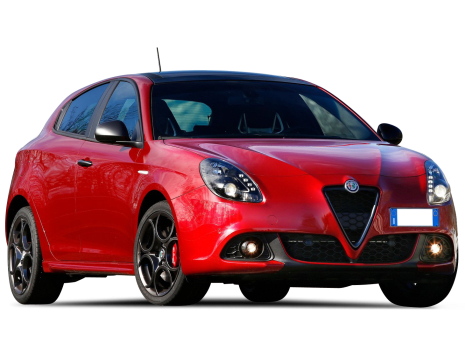
BMW 2 Series VS Toyota GR Yaris
BMW 2 Series
Likes
- Sleek sedan design
- Excellent three-pot turbo engine
- Sharp steering and handling
Dislikes
- Why $7000 more than the hatch?
- Lacklustre warranty term
- Cheap feeling leather trim
Toyota GR Yaris
Likes
- Brilliant powertrain
- Superb dynamics
- Relative refinement
Dislikes
- Some hard plastics in cabin
- Oversize interior mirror
- Audio exhaust noise enhancement
Summary
BMW 2 Series
You’d be forgiven for thinking there aren’t many sedans left on sale in Australia, thanks to the massive shift in buyer preference to SUVs.
But while mainstream carmakers like Ford, Mitsubishi, Nissan, Subaru, Volkswagen and a lot more have scaled back their booted offerings, premium brands are yet to give up on sedans.
BMW alone has seven sedan models in its line-up ranging from small offerings like the 2 Series Gran Coupe all the way up to the 7 Series and 8 Series.
We are focusing on the former for this review, in entry level 218i guise. It’s a sleek sedan that certainly catches the eye, but can it compete with similarly priced SUVs in our crossover-loving country?
| Safety rating | |
|---|---|
| Engine Type | 1.5L turbo |
| Fuel Type | — |
| Fuel Efficiency | 5.9L/100km |
| Seating | 5 seats |
Toyota GR Yaris
It's a rally rocket for the road. A lightweight, pocket-sized, all-wheel drive, three-cylinder turbo screamer with enough grunt to blow the doors off performance cars twice its size.
Yes, it's the much-anticipated Toyota GR Yaris, the basis for homologation of Toyota's 2021 World Rally Championship contender. And remember, Toyota won the manufacturer's title in 2018, the driver's championship last year, and is leading the WRC pack in 2020. So, it's a significant arrival, packing a huge amount of tech into a compact, entertainingly racy package.
Toyota invited us to a local launch program, including open and closed road driving opportunities, so we could see what all the fuss is about.
| Safety rating | |
|---|---|
| Engine Type | 1.6L turbo |
| Fuel Type | Premium Unleaded Petrol |
| Fuel Efficiency | 7.6L/100km |
| Seating | 4 seats |
Verdict
BMW 2 Series7/10
The sleek 2 Series Gran Coupe has injected some life into the sedan segment and adds another dimension to BMW’s line-up.
After spending a week with the 118i hatch and another week with the 218i Gran Coupe, I would pick the hatch because it suits my needs better and has a more understated design, at least from the A-pillar back.
But there is little to fault in the 218i, aside from the obviously higher price compared with a mainstream sedan like a Mazda3. But, as with the hatch, if you want something a little more premium and a little more special, then this funky sedan is well worth considering.
Toyota GR Yaris8.3/10
In late 2020, Toyota Australia offered the first 1000 examples of the GR Yaris at a discount to help establish the car and the GR brand. The first 250 were accounted for in 30min. That grew to 560 in 24 hours, and all 1000 were spoken for in seven days. Another hundred, at a slightly higher price, were snapped up in only a few weeks.
There'll be fresh supply in 2021, although it's not yet known how many or exactly when. But we do know they'll be at full retail price. Even at $50K, I'd say, if you're thinking about it, don't hesitate. This is an instant classic.
Design
BMW 2 Series
From the front, the 2 Series Gran Coupe carries the same face as the handsome 1 Series hatchback. But from the A-pillar back, it’s a completely different look.
BMW’s ‘Gran Coupe’ series of models - 2, 4 and 8 Series - are not just regular sedans. They are sleeker, with a coupe-like sloping roofline and a more squat stance. It’s BMW’s way of making sedans sexy. And it has worked on each of those models.
The 218i’s boot sits up high and the rear treatment with the wide slimline tail-lights and integrated boot lip spoiler make the car visually appealing. I prefer the look of the 1 Series hatch, but appreciate the sleek sedan.
As with the hatch, the 218i’s interior is a modern take on the unmistakable BMW cabin, and for the most part it’s a successful design.
Toyota GR Yaris8/10
First thing you'll notice is that this is a three-door body that's waaay lower and waaay wider than the standard five-door Yaris.
That's because World Rally Championship regulations for 2021 demand a competition car's bodywork must be close to the road car it's based on.
| (mm) | Yaris five-door | GR Yaris | +/- |
| Length | 3940 | 3995 | +55 |
| Width | 1695 | 1805 | +110 |
| Height | 1505 | 1455 | -50 |
| Wheelbase | 2550 | 2558 | +8 |
| Track (fr) | 1480 | 1535 | +55 |
| Track (rr) | 1475 | 1565 | +90 |
The GR's roof tapers steeply at the rear, being 50mm shorter than the standard five-door overall, but 90mm closer to the ground at the trailing edge of the roof. Combine that with frameless doors and you have a close to coupe look.
It's offered in the Gazoo Racing colours of black, red and white, specifically, 'Tarmac Black' (metallic), 'Feverish Red' (mica-metallic), and 'Glacier White' (solid).
The GR sits on a new, dedicated TNGA platform, essentially combining the front end of the Yaris (GA-B platform), with the rear of the Corolla (GA-C), and you'll understand why a bit later.
It shares just three exterior components with the Yaris hatch – headlights, tail-lights and mirrors. And the car stands apart thanks to its more aggressive grille with huge front air intakes.
There's also a rear spoiler, side skirts, and fat fenders, with 18-inch Enkei forged alloy rims sitting under them. They're shod with high-performance Dunlop SP Sport Maxx rubber (225/40).
The wider tracks, greater overall width, fat rubber, and pumped guards give the car an aggressive stance and tough look. Like a muscular terrier ready to chase down whatever you throw at it.
The headlights, taillights and front and rear fog lights are LED. And there's tricky aero everywhere, from spats in front of each tyre, to multiple underbody covers, and steps built into the inside of the rear bumper.
Weight has been carved off all around the car, but the highlights are a carbon roof, aluminium bonnet, doors and tailgate, and the body uses lots of lightweight, high-tensile steel.
Inside the sports front seats feature suede inserts and leather accents, there's a small-diameter, leather-trimmed steering wheel, and a short-throw gear shift and handbrake.
The dash is a neat, two-tier design, with the 7.0-inch media screen standing proud at the centre of the upper level. The top part is covered in a soft-touch layer, but the plastics used on the lower dash section and doors are unforgivingly hard.
A simple instrument binnacle houses a large speedo and tacho dials sitting either side of a 4.2-inch multi information display, offering an array of details including turbo pressure and gear-shift indicators.
Practicality
BMW 2 Series
The main key difference between the 1 and 2 Series is the boot capacity. But in terms of interior appointments, not much separates the two.
Our 218i test car was optioned with black ‘Dakota’ leather trim, which does not look or feel particularly premium. The blue pattern trim in the 118i hatch was much more visually appealing, helping to break up the dark greys of the cabin. But in the 218i, it just makes everything look rather dark and gloomy.
As with the 118i, the BMW 'iDrive' controller and multimedia touchscreen are top notch, all controls come to hand easily, and the dash is angled to the driver. For more details on the interior, check out my 118i review.
The bigger differences are in the second row. The Gran Coupe has less headroom compared with the hatch, due to the sloping roofline and the optional sunroof.
Both body styles share the same 2670mm wheelbase, which should mean legroom is the same. For some reason the 218i feels ever so slightly tighter in the rear, but we are splitting hairs here.
Rear-seat occupants have access to two USB-C ports, map pockets and, unlike the hatchback, the Gran Coupe has a central fold-down armrest with two cupholders. Tall bottles will fit in the door storage compartment. Sadly the 218i lacks any rear air vents.
The doors also have a smaller aperture, so it’s not as easy to get in and out of compared to the hatch.
The rear seats fold 60/40 via levers in boot. Speaking of which, the boot can swallow 430 litres of cargo, which easily exceeds the 380L capacity of the 118i hatch. It also matches the boot space in the Mercedes-Benz A180 sedan and is just five litres bigger than the Audi A3 35 TFSI sedan.
Toyota GR Yaris7/10
Not only does the GR have two fewer doors than the standard Yaris, as a strict four-seater, it also has one less seating position.
Although this car is focused on driver engagement, day-to-day practicality isn't forgotten with storage comprising elongated trays on the lower level of the two-tier dash, a modest glove box, a storage compartment/armrest between the front seats, front door bins with (500ml) bottle holders, and a pair of cupholders in the centre console.
The rear seats are nicely sculpted, but despite a marginally longer wheelbase, it's tight back there. Sitting behind the driver's seat set for my 183cm (6'0") driving position I was cramped for headspace and legroom. Great for a couple of pre-teen kids, but very much a short trips only proposition for grown-ups.
No fold-down centre armrest, cupholders or storage back there either, although outer armrests are recessed into the interior panels behind the B-pillars. Connectivity runs to a single USB-A socket and 12V outlet in the front.
Boot capacity with the 60/40-split fold rear seat up is 141 litres (VDA), which is tiny, but expands to a claimed 737 litres with it folded down. Enough, Toyota says, to load in four spare wheels/tyres for track days.
On the subject of spare tyres, don't bother looking for even a space saver as standard fit. An inflator/repair kit is your only option.
Price and features
BMW 2 Series
Determining whether the BMW 218i Gran Coupe represents good value is tricky. Because you can get any number of small sedans from mainstream brands - like the Mazda3, Toyota Corolla, Subaru Impreza and more - for much less money, but with similar, or in some cases, more kit.
But if you’ve been 'glamoured' by the BMW badge and couldn’t possibly buy something non-European, the good news is the Bavarian brand is much better at including standard features than it used to be.
Could there be more standard gear for the price in this car? Absolutely. But, it’s not a slim features list either.
The 218i kicks off the 2 Series Gran Coupe line-up from $56,900, before on-road costs. From there you can step up into the 220i ($59,900) which gets a little more power and torque, and then there’s the sporty M235i xDrive Gran Coupe in Pure ($74,900) and regular guise ($79,900).
The price difference between the 218i sedan and the 118i hatchback I reviewed recently, is $7000. That is a massive uptick in price for a vehicle that, underneath, is identical. Essentially you’re paying for the boot.
It’s especially surprising when you consider the price gap between the hatch and sedan versions of its chief rival - the Mercedes-Benz A-Class A180 - is just $1700. While the Audi A3 35 TFSI sedan is only $2500 more than the Sportback hatch.
A lot of mainstream brands don’t charge any extra for a sedan body style over the hatch model in the small segment. Take a bow Mazda3, Kia Cerato and Toyota Corolla.
Toyota GR Yaris8/10
First up, let's get the price on the table. At $49,500, before on-road costs, the GR Yaris is not a budget-focused shopping trolley. But you'll want to take the long way home on the grocery run.
At that around $50K mark an interesting range of cross-shopping options emerge. Audi's S1 ($50,400) is super cool and AWD, but gives ground on grunt at 170kW. The Mercedes-Benz A250 ($51,500) also looks sharp, but you have to pay $57,800 for the AWD '4Matic' version to match the GR's drivetrain.
Renault's Megane R.S. Cup Trophy ($53,490) is a three-pedal sporting thoroughbred, but it's FWD only. And then there's the VW Golf. Soon to be updated in eighth-generation guise, the current GTI manual ($47,190) undercuts the Yaris but is FWD only. Step up to the AWD Golf R and you have 213kW to play with, but cost-of-entry is $55,990.
So, the GR Yaris hits the Goldilocks zone on price and dynamic performance, but what about spec? Aside from the safety and driver-focused tech, as well as the exotic materials baked into the car's design, the standard equipment list includes, heated sports front seats with suede and leather accents, a small-diameter leather-trimmed and heated steering wheel, plus leather on the short-throw gear shift and (manual) handbrake.
There's also a 7.0-inch colour media touchscreen (including voice recognition) with Apple CarPlay and Android Auto, and eight-speaker JBL audio (including digital radio and active noise control), satellite navigation, adaptive cruise control, dual-zone climate control air, plus keyless entry and start. A 4.2-inch multi information display sits between the main dials in the instrument display.
Not a premium fit-out, but far from spartan, with the majority of those features enhancing the central focus on driving enjoyment.
Under the bonnet
BMW 2 Series
Mirroring the 118i, the 218i uses BMW’s three-cylinder turbocharged petrol engine, with power and torque outputs of 103kW and 220Nm, respectively. This compares to 110kW/250Nm for the base Audi A3 and 100kW/200Nm for the Mercedes-Benz A-Class.
The 218i uses a seven-speed dual-clutch automatic transmission driving the front wheels only.
According to BMW, the 218i can complete the 0-100km/h dash in 8.7 seconds - 0.2sec slower than the hatch.
Toyota GR Yaris9/10
Under the GR Yaris' bonnet is an all-new (G16E-GTS), single-turbo, 1.6-litre three-cylinder engine, making 200kW at 6500rpm and 370Nm from 3000-4600rpm.
That's nearly 270hp from a 1.6-litre triple! And Toyota claims it's the world's most powerful, mass-produced, three-cylinder powerplant.
It features heaps of competition-focused elements, including multi oil-jet piston cooling, machined intake ports and large-diameter exhaust valves, as well as an aluminium oil cooler and high-capacity water pump.
The single-scroll turbo uses ball-bearing internals for rapid spool up, and the intercooler is a large crossflow type. The pistons are pent-roof for more efficient combustion (with minimal heat loss), while shot-peening of surfaces and a resin coating for the piston skirt are claimed to reduce friction and improve durability.
The battery sits under the boot floor (rather than in the engine bay), which leaves room for a high-volume (10.8-litre) air cleaner (with compound filter).
Drive goes to all four wheels through a (EA67F) six-speed manual gearbox, and Toyota's latest 'GR-Four' permanent all-wheel drive system.
The mechanical, electronically-controlled system is built around a lightweight high-response coupling, and a rear diff featuring an integrated, electronically-controlled, multi-plate clutch.
It uses a slightly different gear ratio for each axle which delivers a theoretical torque split of up to 100 per cent to the front or rear wheels, with multiple pre-set modes available.
'Normal' is 60:40 front to rear. 'Sport' is 30:70 for your favourite B-road, and 'Track' is 50:50 for a quick, balanced circuit set-up.
Efficiency
BMW 2 Series
On the official combined fuel cycle, the 218i uses 5.9 litres of fuel per 100 kilometres - the same as the 118i hatch. After a week of mixed driving, I recorded a figure of 9.1L/100km, which is quite a bit more than that official figure.
In terms of CO2 the official emissions figure is 135g/km and the 218i requires 95 RON premium fuel for its 50-litre fuel tank.
Toyota GR Yaris8/10
Claimed fuel economy for the combined (ADR 81/02 - urban, extra-urban) cycle is 7.6L/100km, the GR Yaris emitting 172g/km of CO2 in the process
Stop-start.is standard, but you'll be heading for the priciest bowser because minimum fuel requirement is 98 RON premium unleaded. You'll need 50 litres of it to fill the tank.
With track time in mind, a 2.1-litre sub-tank is designed to ensure consistent fuel delivery, even with the fuel-warning light on and lateral forces reaching up to 1.2G during hard cornering.
Driving
BMW 2 Series
If you love the look of the 2 Series Gran Coupe but are after an extra dollop of performance, the all-wheel drive 225kW/450Nm M235i xDrive is the pick of the range.
But don’t think the 218i is a lazy performer - it’s far from it.
The 218i’s acceleration is responsive, even quick, and it offers more than enough straight-line performance to satisfy most drivers.
On take-off there is some turbo lag, which isn’t helped by the fuel-saving idle-stop system, however that can be switched off, which we did every time we got behind the wheel.
Momentum was a little blunted by a steep hill, but other than that, no complaints about the sweet engine.
Steering is weighted on the heavier side but it is sharp.
As is expected of a BMW sedan, the 218i is engineered for engaging handling, and the balanced chassis and well-tuned suspension set-up encourage enthusiastic driving.
Excellent road-holding and grip ensured it did not come unstuck on uneven roads and overall the 218i feels really solid. Those front-wheel drive naysayers have officially been put in their place!
'Sport' mode livens things up with a noticeable improvement to throttle response.
The ride seems more supple at speed, but can feel on the firmer side in urban driving. But nothing that would strike it from your shopping list.
Toyota GR Yaris10/10
This is unlike any Yaris you've ever known. Tommi Mäkinen Racing partners with Toyota in the WRC, and had big input into this car's development, as did a bunch of pro racing drivers. And it definitely feels like a road-ified competition car.
Claimed 0-100km/h acceleration is 5.2sec, although four-time Australian rally champion and long-time Toyota collaborator, Neil Bates, showed us data he'd been sent by an early-adopting Aussie customer, lowering that number to 4.7sec.
Similar times have been recorded independently overseas, and the car feels every bit that quick, surging forward with pure, linear, thrust.
Peak torque of 370Nm is a gigantic number for a 1280kg hatch, and it's available across a broad plateau from 3000-4600rpm.
The high-performance exhaust incorporates dual mufflers and circular sound baffles wrapped around its twin tailpipes. The result is typically guttural three-cylinder engine noise combined with a raucous, growly, exhaust note.
But beware, Toyota has played around with "engine sound enhancement" through the audio system, "integrated with throttle action and vehicle speed." Boo.
Aside from its rapid acceleration one of the strongest initial impressions behind the wheel of the GR Yaris is how well it rides.
he reason the Corolla's rear end was grafted onto the front of the Yaris to make this car's platform is that while the strut front suspension remains (albeit re-tuned with newly developed knuckles, stiffer bushes, and beefier struts), the rear swaps out the standard car's puny torsion bar set-up, for a wider track, trailing-arm, multi-link arrangement.
I was expecting harshness in line with the GR's performance focus, but not so. Aside from some rumble on coarse roads from the 225/40 Dunlop SP Sport Maxx tyres, this powerhouse Yaris is surprisingly civilised. For mine, a great balance between ride quality and dynamic response is the hallmark of a thoroughly well-tuned suspension.
The sports front seat is a fantastic combination of location and comfort, the short-throw shift for the six-speed manual gearbox is sublime, while clutch weight and action are spot-on. Save the manuals!
There's a little button on the console to fire up a 'iMT' rev-matching function, but I preferred the old-school 'heel and toe' for braking and down-changing into corners, and the relationship of the pedals is made for it. Huge fun, and very satisfying.
Then there's the steering. The absolutely superb steering. It's electrically-assisted, yet road feel is brilliant, thanks in part to the column's tricky (mainly aluminium) construction, there's next to no shock feeding back through the wheel. A direct connection with the front treads, with no NVH penalty is mega-impressive.
And the brakes are professional grade, with 356mm x 28mm two-piece ventilated and grooved front discs clamped by four-piston alloy calipers, 297mm x 18mm vented rotors at the rear with two-piston calipers, and high friction pads all around.
Put it all together and you have a 'please don't let it end' hot-hatch experience. Set to Sport on the open road, the GR-Four AWD system quietly does its thing.
Irrespective of the selected mode, torque balance shifts in response to driver inputs (steering angle, throttle and brake) and vehicle behaviour (acceleration, yaw rate, etc), as well as surface conditions. It's amazing, and turns go-fast wannabes into neat and tidy heroes.
The GR Yaris puts its power down firmly, and grips hard, but at the limit, the system also co-operates with the stability and traction controls, and ABS to keep things on an even keel.
The car is balanced, communicative, and super responsive. You somehow sense, rather than consciously feel, the smart AWD system buttoning things down behind the scenes.
The brakes, complete with short-stroke pedal, are flawless, washing off speed powerfully but progressively, with zero fade, even after a solid hammering on closed road exercises during the launch program.
Scratching my head for something to pick on, the best I can come up with is the size of the interior rear-view mirror. It's big, and the windscreen's short, so sighting the apex in left-hand corners can be tricky. That's it.
Safety
BMW 2 Series
The 2 Series Gran Coupe carries over the maximum five-star ANCAP crash safety rating awarded to the mechanically related 1 Series hatch. The test was conducted in 2019.
Standard safety equipment includes low-speed auto emergency braking, forward collision warning, lane departure warning, rear cross-traffic alert, driver attention alert, front and rear parking sensors, reversing camera, cruise control, and six airbags - although it doesn’t include a front centre airbag.
Toyota GR Yaris8/10
Although the standard five-door Yaris scores a maximum five ANCAP stars for all variants, this completely different, low-volume beast won't be assessed, and can't claim the same status. But that's not to say it's lacking in active and passive safety tech.
The GR Yaris features Toyota's 'pre-collision safety system' incorporating autonomous emergency braking (AEB), able to detect pedestrians day and night, and cyclists during the day.
It also includes emergency steering assist and intersection assistance (able to detect oncoming cars when turning right, and pedestrians crossing the street, when turning right or left), as well as high-speed adaptive cruise control (above approximately 30km/h), lane trace assist, lane departure alert (with steering assistance), road-sign assist (speed signs only), auto high beam, blind spot monitoring, a head-up display, and a reversing camera (with guidelines).
If all that isn't enough to avoid an impact the GR Yaris features six airbags (front, front side, and curtain) as well as two top tether points and ISOFIX child restraint anchors in the rear.
Ownership
BMW 2 Series
The 218i comes with BMW’s three-year/unlimited kilometre warranty - a term that is well behind the majority of its competitors that offer five-year/unlimited kilometre cover.
Rather than an annual service schedule, BMW uses ‘condition-based servicing’, which essentially means that the vehicle’s computer will inform you when the car needs a service.
BMW’s 'Service Inclusive' pre-paid plan covers owners for five years or 80,000km for the 2 Series, and involves a $1700 up-front payment. It averages out to $340 per service, which is actually pretty reasonable for a high-end brand.
Toyota GR Yaris8/10
The GR Yaris is covered by Toyota's five-year/unlimited kilometre warranty, the 'Toyota Warranty Advantage' program also covering the engine and driveline for seven years.
Capped-price servicing is available with scheduled maintenance intervals set at 12-months/15,000km, and $205 (each) for the first five services.






































